Gallery
- St. Francis of Assisi Church
- Vase of Flowers, 1700s
Elisabetta Marchioni | |
|---|---|
| Nationality | Venetian [1] |
| Known for | Painting |
| Style | Still life |
| Movement | Venetian school |
Elisabetta Marchioni (also spelled Marchionni) (flourished ca. 1700) was a Venetian painter. [1] She specialized in still life paintings of flowers. She worked in Rovigo. [2]
There are a number of unsigned paintings depicting "still lives with flowers", previously attributed to Francesco Guardi, known as Pseudo-GuradiMaestro di Fiori Guardeschi, but now postulated as likely the work of either Francesco Duramano, Carlo Henrici, Margherita Caffi, and/or Elisabetta. [3] [4] [5]

Tiziano Vecellio, Latinized as Titianus, hence known in English as Titian, was an Italian Renaissance painter, the most important artist of Renaissance Venetian painting. He was born in Pieve di Cadore, near Belluno. During his lifetime he was often called da Cadore, 'from Cadore', taken from his native region.

Giovanni Battista Tiepolo, also known as GiambattistaTiepolo, was an Italian painter and printmaker from the Republic of Venice who painted in the Rococo style, considered an important member of the 18th-century Venetian school. He was prolific, and worked not only in Italy, but also in Germany and Spain.
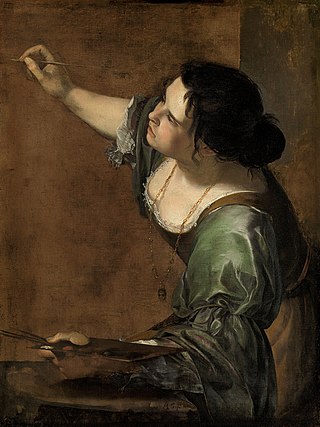
Artemisia Lomi or Artemisia Gentileschi was an Italian Baroque painter. Gentileschi is considered among the most accomplished 17th-century artists, initially working in the style of Caravaggio. She was producing professional work by the age of 15. In an era when women had few opportunities to pursue artistic training or work as professional artists, Gentileschi was the first woman to become a member of the Accademia di Arte del Disegno in Florence and she had an international clientele.

Carlo Crivelli was an Italian Renaissance painter of conservative Late Gothic decorative sensibility, who spent his early years in the Veneto, where he absorbed influences from the Vivarini, Squarcione, and Mantegna. He left the Veneto by 1458 and spent most of the remainder of his career in the March of Ancona, where he developed a distinctive personal style that contrasts with that of his Venetian contemporary Giovanni Bellini.
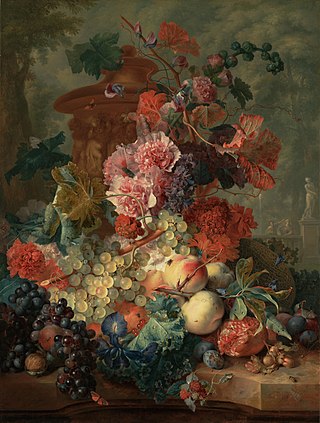
Jan van Huysum is the most notable member of the Van Huysum family of artists working in Dutch Golden Age of the 17th and 18th centuries; "by common consent, Jan van Huysum has been held to be the best painter of flowers." Trained in decoration from a young age, he "gradually developed an execution of details of the utmost beauty and finish" creating "wonderful flower pieces whereon drops of water and crawling ants could be seen without a magnifying glass."

Bernardo Strozzi, named il Cappuccino and il Prete Genovese, was an Italian Baroque painter and engraver. A canvas and fresco artist, his wide subject range included history, allegorical, genre and portrait paintings as well as still lifes. Born and initially mainly active in Genoa, he worked in Venice in the latter part of his career. His work exercised considerable influence on artistic developments in both cities. He is considered a principal founder of the Venetian Baroque style. His powerful art stands out by its rich and glowing colour and broad, energetic brushstrokes.

Jacopo Bassano, known also as Jacopo dal Ponte, was an Italian painter who was born and died in Bassano del Grappa near Venice, and took the village as his surname. Trained in the workshop of his father, Francesco the Elder, and studying under Bonifazio Veronese in Venice, he painted mostly religious paintings including landscape and genre scenes. He often treated biblical themes in the manner of rural genre scenes, portraying people who look like local peasants and depicting animals with real interest. Bassano's pictures were very popular in Venice because of their depiction of animals and nocturnal scenes. His four sons: Francesco Bassano the Younger, Giovanni Battista da Ponte, Leandro Bassano, and Girolamo da Ponte, also became artists and followed him closely in style and subject matter.

Alessandro Vittoria was an Italian Mannerist sculptor of the Venetian school, "one of the main representatives of the Venetian classical style" and rivalling Giambologna as the foremost sculptors of the late 16th century in Italy, producing works such as Annunciation.

Elisabetta Sirani was an Italian Baroque painter and printmaker who died in unexplained circumstances at the age of 27. She was one of the first women artists in early modern Bologna, who established an academy for other women artists.

Carlo Marchionni was an Italian architect. He was also a sculptor and a virtuoso draughtsman, who mixed in the artistic and intellectual circles. He was born and died in Rome.
Events from the year 1665 in art.
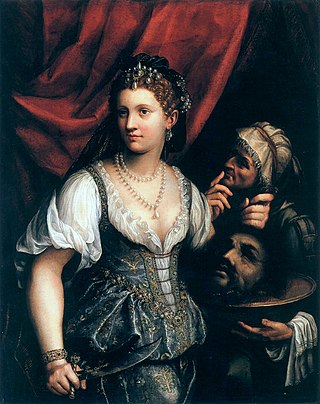
Fede Galizia, better known as Galizia, was an Italian painter of still-lifes, portraits, and religious pictures. She is especially noted as a painter of still-lifes of fruit, a genre in which she was one of the earliest practitioners in European art. She is perhaps not as well known as other female artists, such as Angelica Kauffman and Élisabeth Vigée Le Brun, because she did not have access to court-oriented or aristocratic social circles, nor had she sought the particular patronage of political rulers and noblemen.

Gregorio Lazzarini was an Italian painter of mythological, religious and historical subjects, as well as portraits. One of the most successful Venetian artists of the day, a prominent teacher, and father to a significant school of painting, he is best known for having first trained Giambattista Tiepolo, who joined his workshop in 1710 at the age of fourteen. His own style was somewhat eclectic.

Paolo Veneziano, also Veneziano Paolo or Paolo da Venezia was a 14th-century painter from Venice, the "founder of the Venetian School" of painting, probably active between about 1321 and 1362. He has been called 'the most important Venetian painter of the 14th century'. His many signed and dated works, some in collaboration with his sons, range between 1333 and 1358. He was regarded as the official painter of the Venetian Republic.
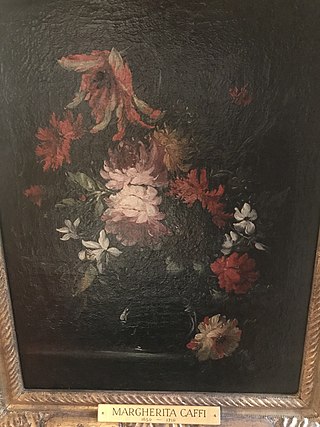
Margherita Caffi was an Italian painter of still lifes of flowers and fruit. She was born Margherita Volo, in Milan to Francesco Volo and his wife, Veronica. In 1668, she married Ludivico Caffi in Cremona. She settled in Piacenza in 1670. She is known to have had at least four children. She died in Milan at the age of sixty.

Barbara Longhi was an Italian painter. She was much admired in her lifetime as a portraitist, although most of her portraits are now lost or unattributed. Her work, such as her many Madonna and Child paintings, earned her a fine reputation as an artist.
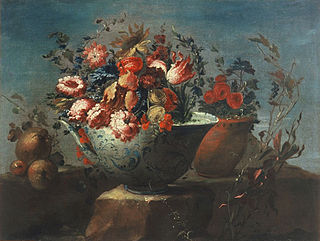
Francesco Duramano was an Italian painter known for floral still lifes. He was born in Venice, and active there and in Brescia.

Black Iris, formerly called Black Iris III, is a 1926 oil painting by Georgia O'Keeffe. Art historian Linda Nochlin interpreted Black Iris as a morphological metaphor for female genitalia. O'Keeffe rejected such interpretations in a 1939 text accompanying an exhibition of her work, in which she wrote: "Well—I made you take time to look at what I saw and when you took time to really notice my flower you hung all your own associations with flowers on my flower and you write about my flower as if I think and see what you think and see of the flower—and I don't." She attempted to do away with sexualized readings of her work by adding a lot of detail.
This is an ongoing bibliography of work related to the Italian baroque painter Artemisia Gentileschi.

Francesco Caldei called Francesco Mantovano or Mantovani was an Italian painter, mainly known as a still-life painter of flowers, fruits, animals and musical instruments. He also collaborated on garland and allegorical paintings. He was an art valuer and may also have been active as an art dealer. He worked first in Rome and then for the rest of his career in Venice. Here his flower pieces with their Roman flavour and the pleasantness of composition earned the artist considerable commercial success with the Venetian bourgeoisie.